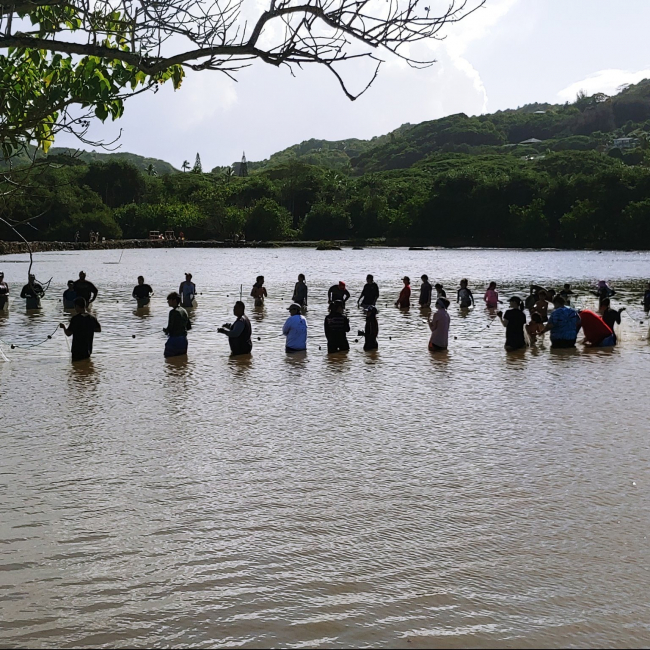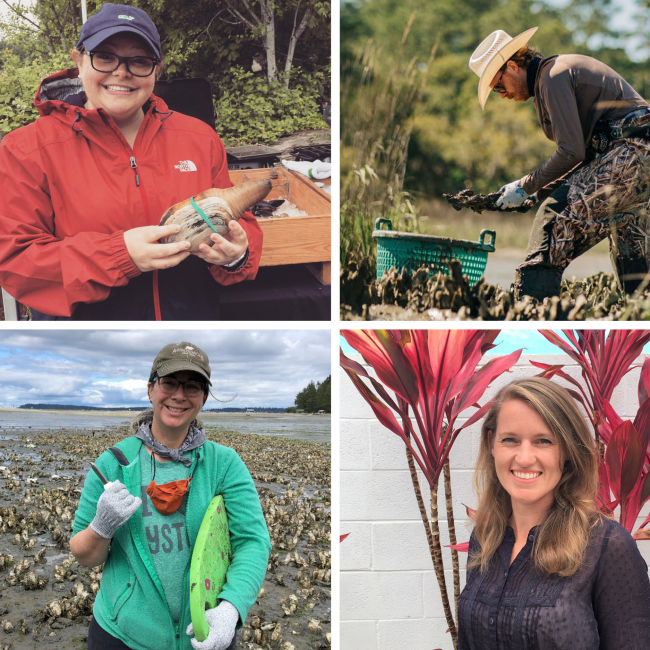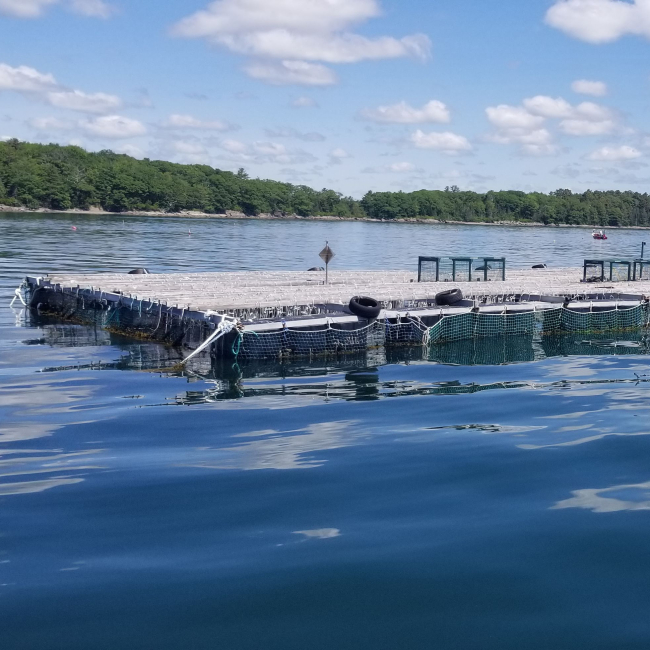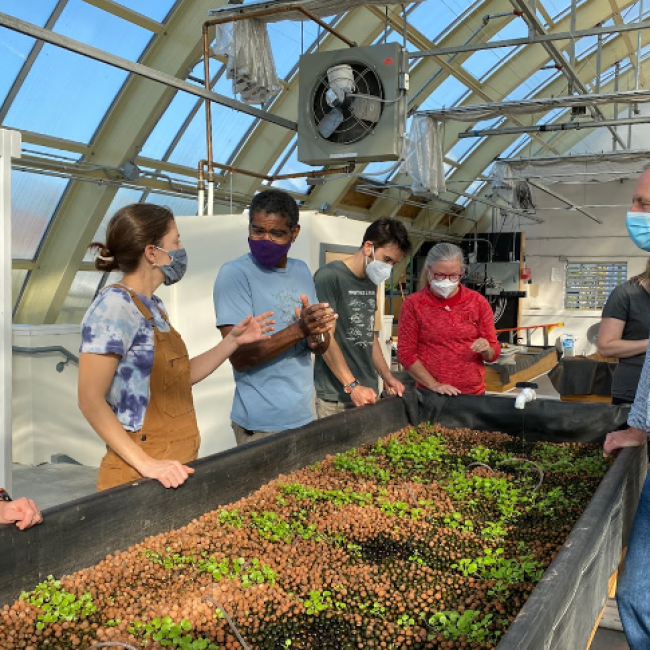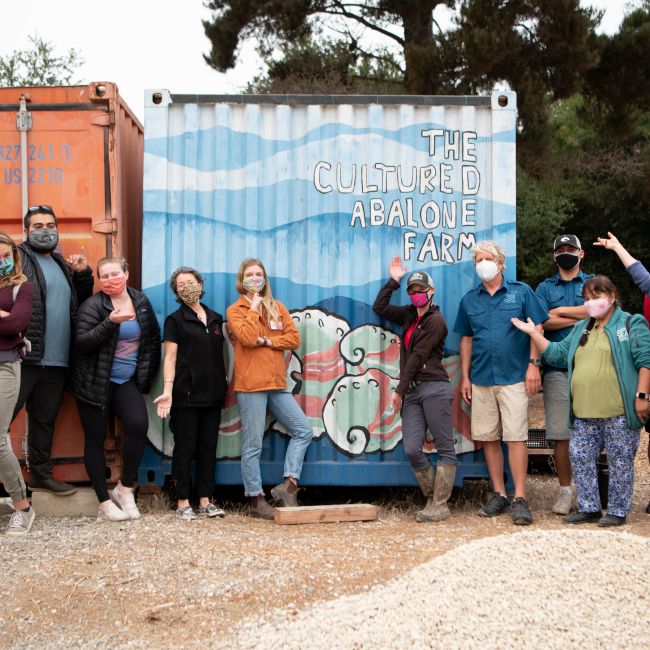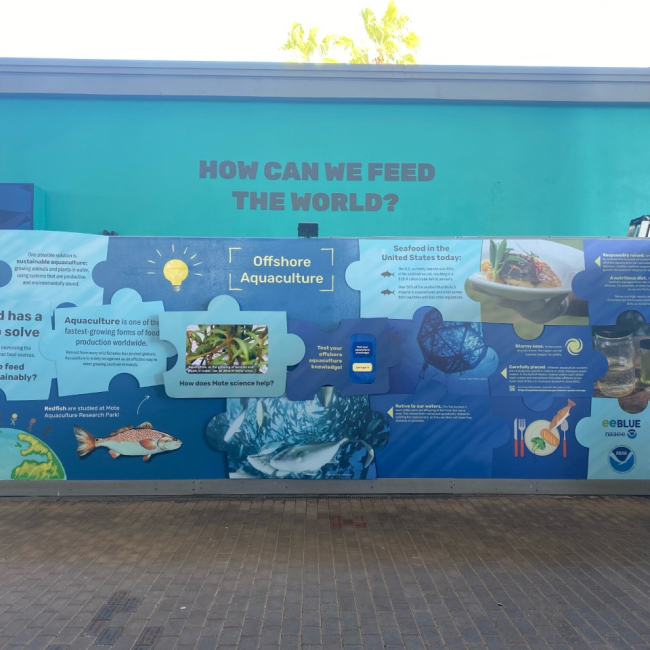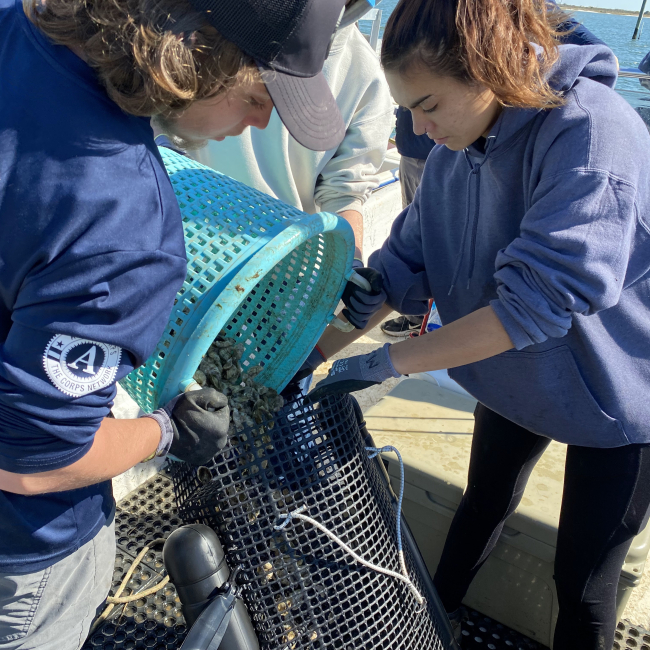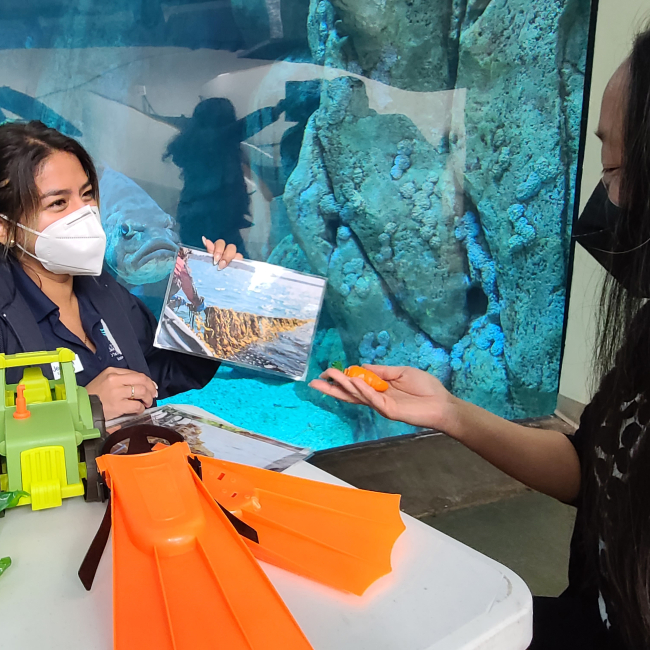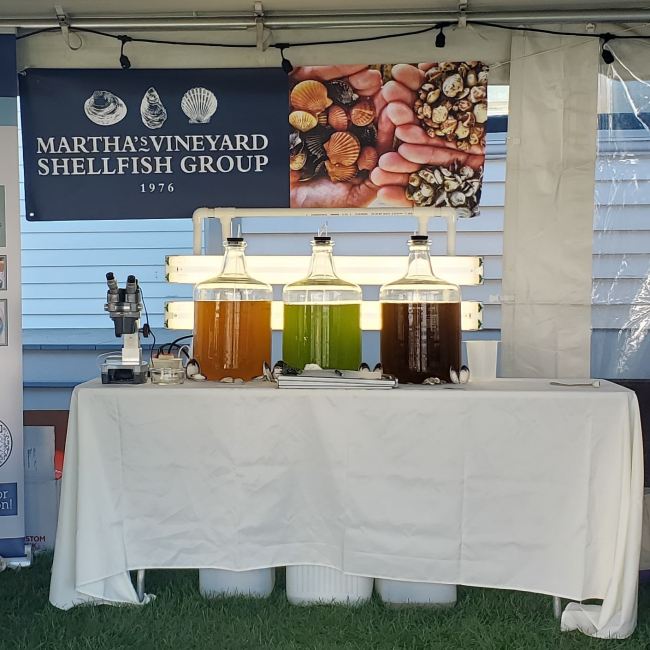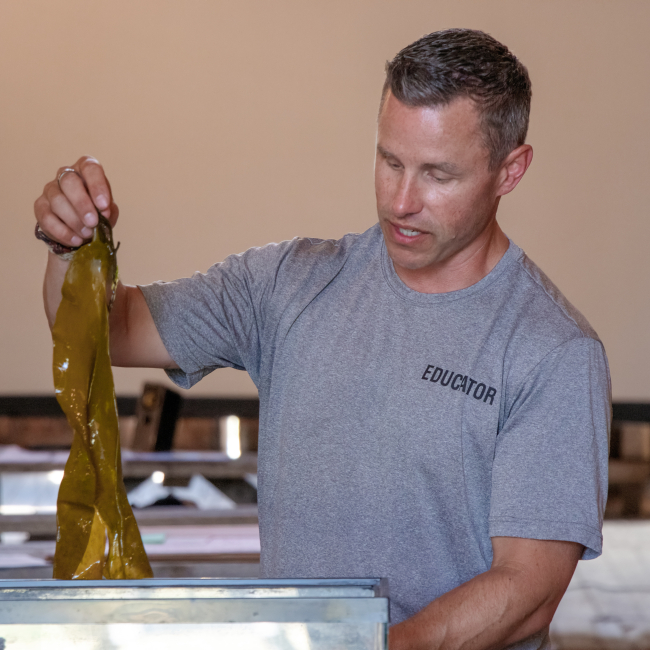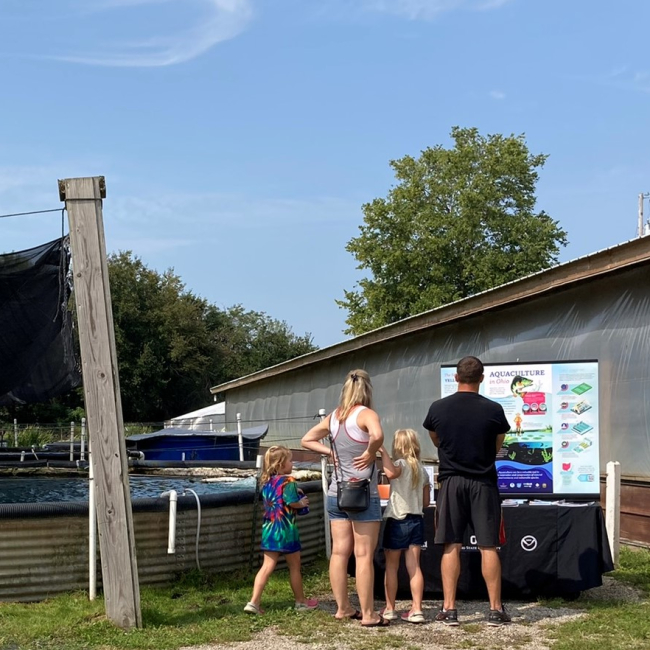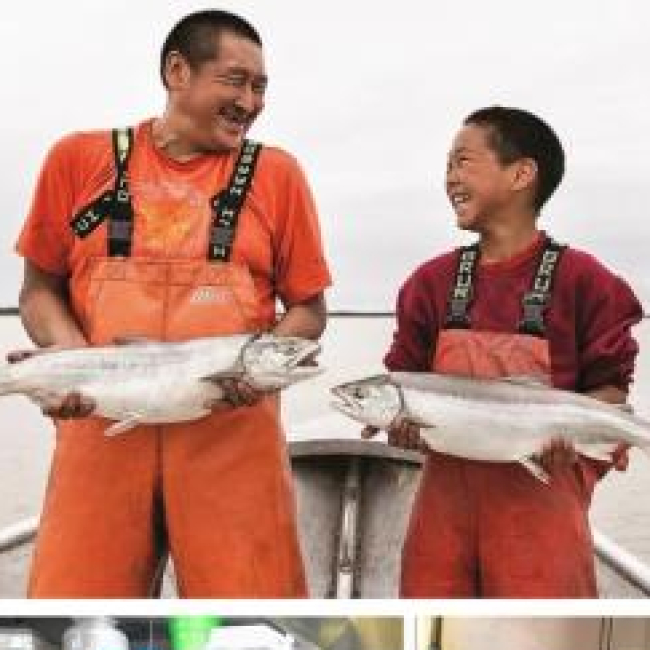Featured teaching resources
We curated a list of featured content to help you with teaching aquaculture in your classroom. Click the sections below to discover educational resources created by NOAA offices, programs, and partners. Resources include everything from K-12 curricula and learning modules to teacher professional development opportunities.
For the classroom
Learning resources available in Spanish
NOAA Fisheries West Coast Region's most popular classroom learning resources available in Spanish.
Lessons in mariculture offsite link
North Carolina Sea Grant offsite link developed ten free lesson plans that cover a variety of mariculture subjects, with the goal of launching student exploration of aquaculture species and biology, production methods, and business planning.
Oysters in the Chesapeake Bay
These K-12 education resources, created by the National Ocean Service, support the National Research Council's Standards for Science Education offsite link using the Eastern Oyster in the Chesapeake Bay as the organizing theme.
Seafood science offsite link and aquaculture offsite link curricula
New York Sea Grant offsite linkdeveloped deep-dive curricula that cover specific information to help include aquaculture and seafood topics in the classroom. These resources are meant to supplement their Becoming a fish farmer offsite link and A spin on seafood offsite link lesson plans, designed for grades 7-12.
Teach aquaculture: Lesson modules offsite link
The University of Florida offsite link, in collaboration with Florida Sea Grant offsite link, offers activity-based curriculum modules written at a 9th grade level. Their modules are paired with recommendations for low cost ways to implement the activities. Teachers can download their resources for free, but are required to register for access.
Resource collections for educators
Aquaculture education webinars from the Coastal Ecosystem Learning Centers network
A YouTube playlist of past Coastal Ecosystem Learning Centers network webinars featuring aquaculture experts in the field, discussing their work through tailored communications for educators.
The Bridge: Ocean science education resource center offsite link
A collection of marine education materials available online, curated by Sea Grant. Resources are organized by subject and are searchable by topic and grade level.
Fisheries and seafood
NOAA Education curates a resource page that summarizes what sustainable fisheries are, seafood's role in feeding the world's growing population, and NOAA's role in managing U.S. fisheries.
NOAA Fisheries educational materials
A searchable resource collection of educational materials and curricula, also linked to collections for students.
NOAA Fisheries video gallery
A searchable database of educational videos covering a variety of fisheries topics including aquaculture, sustainable seafood, and sustainable fisheries.
NOAA Live! webinar series
A playlist of NOAA webinars for students covering everything from "Science on the half shell" to "Abalone: Gardners of the kelp".
Ocean today
A supplemental resource for educators, with an archive of NOAA's ocean education videos that originally appeared at the Sant Ocean Hall offsite link in the Smithsonian Institute's National Museum of Natural History offsite link.
Educator trainings and experiences
Aquaculture in Action program offsite link
A K-12 aquaculture education program created by Maryland Sea Grant offsite link and Maryland Extension offsite link in 1996. This ongoing program offers teacher professional development, technical support, and partnership opportunities to implement aquaculture education activities in the classroom.
Explore teaching about the Chesapeake Bay online
NOAA Fisheries offers online courses designed for teachers and other educators that cover science topics related to the Chesapeake Bay, including different ways to teach science in and out of the classroom.
Professional development opportunities for educators
NOAA Ocean Exploration offers a three-part online professional development course for educators to take a deep dive into ocean science and exploration topics. Educators that participate in all three parts receive a certificate of participation.
Most aquaculture fish begin their lives in a hatchery. In fact, the populations of many fish caught by traditional fishing are augmented in hatcheries, then released.
Just like their wild counterparts, aquaculture species need the right conditions to grow. Each region of the United States features different ecosystems, a variety of water temperatures, and many different species for aquaculture.
Today the United States imports about 80% of the seafood we eat by value – more than any other country.
Some marine aquaculture, such as shellfish and seaweed aquaculture, provides environmental benefits by removing excess nutrients from our waterways.
Integrated multi-trophic aquaculture (IMTA) is the practice of culturing species from multiple levels in the food chain that allow for assimilating of fish wastes, thus reducing environmental discharge. The most commonly selected species for IMTA with marine fish are seaweeds, oysters, and mussels.
Globally, aquaculture supplies more than 50 percent of all seafood produced for human consumption.
An adult oyster can filter up to 50 gallons of water a day, while a large quahog can clean about 24 gallons of water a day. A farm with 100,000 oysters per acre can potentially filter up to 5,000,000 gallons of water per day, per acre.
NOAA is using a combination of scientific analysis and public engagement to identify Aquaculture Opportunity Areas (AOAs) that are environmentally, socially, and economically appropriate for commercial aquaculture.



